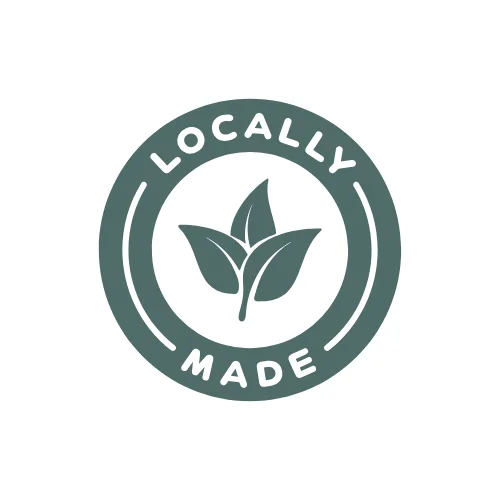4 Ways to Make Your Gazebo Warm, Inviting, and Beautiful at Night!
Outdoor lighting can completely transform a gazebo. With the right setup, your structure becomes a cozy gathering space for evening dinners, late-night conversations, or ambient backyard relaxation. The best part is that many lighting ideas do not require an electrician and can be done with simple, affordable materials.
Below are four creative gazebo lighting ideas that enhance style, improve safety, and add atmosphere to your outdoor space.
1. Fairy Lights
Fairy lights are one of the most popular lighting choices for gazebos because they are easy to install and create an instant warm glow. Wrap them around posts and railings or drape strands across the roofline for a soft, inviting look. You can also extend the lights to nearby trees for added effect.
While traditional incandescent lights work, LED fairy lights are a better option. They stay cool to the touch, use less energy, and last for years even when left on for long periods.
DIY Tip:
Use small adhesive hooks or clear zip ties to secure the lights neatly around posts and railing. This keeps the strands tight, clean-looking, and prevents them from sagging over time.

2. Chandeliers and Pendant Lights
A chandelier inside a cedar gazebo adds unexpected elegance. Homeowners often choose brass fixtures, frosted glass pendants, rustic wooden chandeliers, or repurposed statement pieces for a unique touch.
You can match wall sconces to your main fixture for a cohesive look. Pendant lights made of hammered glass, woven fibers, or paper shades also work beautifully for outdoor settings.
DIY Tip:
If you don’t want to hard-wire a fixture, choose a lightweight battery-operated chandelier. Hang it using a sturdy ceiling hook, and swap in rechargeable batteries to keep it glowing all season.

3. LED Ribbon or Tape Lights
LED tape lights create sleek lines of illumination. These adhesive ribbons can be installed along handrails, under roof edges, or around bench seating. They provide consistent, low-heat, energy-efficient lighting and come in many colors.
Tape lights are flexible and can be cut to fit, although trimming should always follow manufacturer instructions to avoid damage.
DIY Tip:
Before installing, clean the wood surface with a dry cloth so the adhesive sticks properly. Map out your lighting path with painter’s tape first to ensure even spacing and a straight line.

4. Sparkle Balls
Sparkle balls are a fun, family-friendly project. They are typically made from clear plastic cups and LED mini lights. By stapling the cups into rounded shapes and threading lights through the openings, you can create glowing orbs that hang beautifully from the gazebo ceiling.
Use white lights for a clean aesthetic or colored lights for a festive feel. Sparkle balls make excellent decor for holidays, outdoor parties, and summer evenings.
DIY Tip:
Use a hole punch or soldering iron to create small, even holes in the plastic cups. This makes threading the lights easier and helps the sparkle ball glow more evenly once assembled.

The consideration and exercise of these safety tips when building a shed should be a part of the planning and building of a garden shed. People tend to take safety for granted at times. Imagine the pain that you go through and the time you lose to nurse a painful black thumb nail or cut finger, remove a sliver from your hand, or any other injury that may happen while you are working on your structure. It pays to be careful.
Being careful can save you time and discomfort! And do not forget it can save you money too!
There are safety tips that you should pay attention to so that you can lower the chances of these injuries. Building a shed for your garden should be an experience that you enjoy and have fun with, not a painful one.
5 Safety Tips When Building a Shed
Here are five safety tips that you should follow to prevent accidents from happening and injuring yourself:
- Wear protective gear – Whether your shed-building project is big or small, it is important to make sure that you always wear proper protective gear at all times. This will ensure that you do not injure yourself while you are working. You should make sure that you always wear safety glasses, hard hat, protective clothing, and leather gloves when you are building your garden shed.
- Handle materials properly – It is important that you take proper care when you are handling materials to avoid injuring yourself and others who may be working around you. You can lower the chances of getting slivers or cuts in your hands or fingers by wearing suitable leather work gloves. You can also prevent bruises and cuts to your arms and legs by wearing protective clothing. When you need to move heavy sheeting or lumber, be sure to ask for help so that you avoid injuring your back.
- Clear the working area – It is important to keep your work area as clear as possible so that you do not stumble and fall or trip on something and hurt yourself. You should make it a point to organize your sheeting, lumber, and other supplies in neat piles. This will ensure that you can easily and safely pick up what you need without the material falling all over the place and avoid injuring yourself.
- Use hand tools with caution – Hand tools, especially those for sawing and nailing, can be dangerous when they are not used properly. It is important that you always handle them with caution. When you are sawing materials, make sure that they have proper support and keep your fingers away from the cutting edge. Always use a proper hammer, usually a claw hammer, when you have nailing jobs. Also, be sure to be careful when holding a nail. You could hit the wrong nail and end up with an excruciating black thumb nail. You can prevent these kinds of injuries with a little care and practice. There are tools that may be easier to hold without gloves for a better grip, so you will need to take extra precautions to avoid getting injured.
- Follow safety rules when using power tools – When you are using power tools, always make sure that you follow safety rules and the manufacturer’s instructions. Also, make sure that your full attention is on the job at hand. As mentioned earlier, make sure that sheeting and lumber are well supported and hold them in a solid position before you turn on your power tool. Make sure that you are always aware of what could happen if chips fly or the piece of wood slips, or if your fingers get too close to the cutting line. Remember that you need to be in control at all times and keep your focus on the task to avoid sloppy work and possibly injuring yourself. You can also damage a power tool if you are not careful of course that is better than hurting yourself.
DIY projects can be fun and they are a salient way to make good use of your time and skills. Instead of hiring a professional to build a garden shed or any other structure for your outdoors, you can do it yourself, provided you use the right tools and materials. A marvelous advantage to building a shed yourself is that you can save a lot of money. Home improvement can be expensive and when you do the job yourself, you can make sure that you stick to a budget and save some cash.
Whether you are building a shed or a pergola, you need to make sure that you take safety precautions at all times. DIY projects involve different types of materials and tools, some of which can be dangerous if you do not exercise caution. By following important safety rules and tips, you can avoid injuries to yourself as well as others who are around you. And your own pets!
As you know, some injuries can be serious and that is why you need to be extremely careful when taking on a DIY project. No one ever had fun in an emergency room! So if you are building a shed, always make sure to make safety a priority to avoid or mitigate the chances of getting injured.



 If you have plenty of open space around your home and want to spend a productive time outdoors, you should start a vegetable garden. This will enable you to enjoy growing your own vegetables and obtain fresh produce for your kitchen, canning purposes, or just by giving them away. The first steps when planning a vegetable garden are locating the site and determining its size. You should start small and expand your vegetable garden over the years.
If you have plenty of open space around your home and want to spend a productive time outdoors, you should start a vegetable garden. This will enable you to enjoy growing your own vegetables and obtain fresh produce for your kitchen, canning purposes, or just by giving them away. The first steps when planning a vegetable garden are locating the site and determining its size. You should start small and expand your vegetable garden over the years.
 If you are planning to add a flower or vegetable garden to your yard, you should consider raised garden beds. A raised garden bed simply consists of a box made of wood, bricks, or blocks which has soil to elevate the planting bed’s level above the surrounding ground.
With raised beds, you get a simple and effective way to create a garden that is healthy and productive by positively manipulating the growing environment. And the best part is that you can create the ideal planting conditions for
If you are planning to add a flower or vegetable garden to your yard, you should consider raised garden beds. A raised garden bed simply consists of a box made of wood, bricks, or blocks which has soil to elevate the planting bed’s level above the surrounding ground.
With raised beds, you get a simple and effective way to create a garden that is healthy and productive by positively manipulating the growing environment. And the best part is that you can create the ideal planting conditions for 


